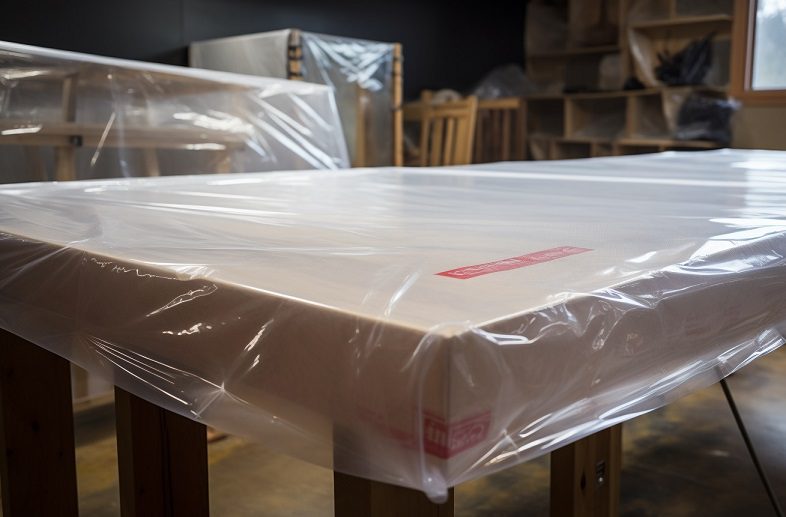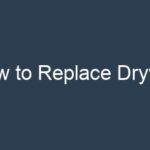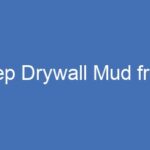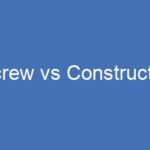What is 6 Mil Vapor Barrier? A Simple Guide to Poly
6 Mil vapor barrier, often an underrated and less acknowledged building component, offers a myriad of options when it comes to barrier thicknesses and materials, as a simple online search reveals.
While 6 mil remains the most prevalent vapor barrier thickness, it’s prudent to familiarize yourself with the various choices available for vapor barriers and vapor retarders.
Understanding Vapor Barriers
A vapor barrier, sometimes referred to as a vapor retarder, consists of a polyethylene plastic sheet. These barriers serve the crucial role of preventing vapor and moisture from infiltrating building envelopes.
They are commonly located behind drywall in various types of walls, including steel stud framed walls, wood-framed walls, concrete slabs, foundation walls, and even select interior walls.
Vapor barriers are measured in mils to indicate their thickness, and most specifications and building codes stipulate the use of a 6 mil vapor barrier in wall construction. However, vapor barrier thickness can vary from 3 mils to 20 mils, each having its specific applications.
To put it in perspective, a standard plastic grocery bag is a mere 1/2 mil thick, highlighting the substantial difference in thickness between these construction-grade barriers and everyday plastic bags.
Vapor Barrier or Vapor Retarder?
A genuine vapor barrier boasts a permeance rating of 0.00 when tested using ASTM E96. Vapor retarders, on the other hand, fall into three distinct classes:
Class I vapor retarders have a perm rating of 0.1 or lower.
Class II vapor retarders feature a perm rating ranging from 0.1 to 1.0.
Class III vapor retarders have perm values between 1.0 and 10.
Any vapor barrier or retarder with a rating exceeding 10 perms is considered a vapor-permeable membrane.
The Mechanism of Vapor Barriers
Vapor barriers operate by impeding or slowing the progress of moisture, preventing it from infiltrating a building. Construction often grapples with issues related to water and moisture penetration, as water tends to flow from areas of higher moisture concentration to those with lower moisture content.
This process mirrors the phenomenon of dew forming on less damp grass due to highly moist air, which is a constant occurrence both indoors and outdoors. Vapor barriers effectively halt this process by obstructing water vapor and preventing condensation within walls, concrete slabs, and foundations.
The Necessity of Vapor Barriers
In most instances and as stipulated by building codes, vapor barriers are indispensable and mandatory due to their multiple functions as insulation, flame retardants, and protectors against various forms of water damage.
Neglecting the use of poly sheeting and vapor barriers during construction or failing to install them correctly can result in severe consequences, including wood rot, mold issues, and structural problems such as buckling and warping in concrete foundations.
Appropriate Locations for Vapor Barrier Installation
The installation of vapor barriers should adhere to local building codes and be tailored to the climate’s unique moisture migration patterns. Moisture migration represents a critical concern in construction, as significant issues can arise over time, even in the absence of heavy rain or roof leaks.
In humid climates, where moist air is exterior to the construction, vapor barriers should be affixed to the wall’s outer edge to safeguard against moisture infiltration. In colder climates characterized by dry external air, the moisture barrier should be positioned behind the drywall on the interior side of the studs.
For concrete foundations, moisture barriers should be installed beneath and extended to the foundation walls to prevent moisture from seeping up from the ground.



The Standard 6 Mil Vapor Barrier
At the very least, a 6 mil polyethylene vapor barrier should be employed for foundation and crawl space encapsulation. For added durability and resilience in demanding construction areas, consider opting for a heavy-duty 12 to 20 mil plastic vapor barrier under concrete slabs.
Certain flooring methods, such as luxury vinyl plank floating floors, specific wood floors, and laminate flooring in dry climates, may require a 6 mil vapor barrier as an essential component.
Selecting the right vapor barriers necessitates a comprehensive understanding of the diverse moisture barrier types available.
Vapor Barrier Classes
Moisture barrier materials fall into distinct categories based on their permeability ratings, often measured in “perms.” They are classified into three classes:
Class I (0.1 perms or less): Examples include poly sheathing, glass or metal sheets, and rubber membrane.
Class II (0.1 – 1.0 perms): This category includes unfaced polystyrene, 30 lb. asphalt-covered paper, and Bitumen-coated Kraft paper.
Class III (more than 1.0 perms): Materials in this class encompass gypsum board, fiberglass insulation, board lumber, concrete block, cellulose insulation, and brick.
Procuring 6 Mil Vapor Barrier and Plastic Sheathing
Standard plastic barriers and construction film are measured in mils, with thickness options ranging from 3 to 20, depending on the intended use. In most cases, 6 mil polyethylene or 6 mil plastic sheeting, such as Visqueen, is suitable for walls and floors.
In humid climates, a thinner barrier like 3 mil Visqueen or 4 mil poly vapor barrier can assist in cooling the home. However, it’s important to note that thinner barriers are more susceptible to tearing. Therefore, a 6 mil vapor barrier is a recommended minimum for various applications, even as a simple drop cloth.
For crawl spaces and foundations, it’s crucial to select heavy-duty barriers specifically designed for these purposes, typically ranging from 12 mil to 20 mil in thickness. Thinner barriers like 3 to 6 mil are not suitable as they may eventually tear and permit vapor infiltration.
Exploring 6 Mil Vapor Barrier Options
When utilizing a 6 mil vapor barrier for crawl space encapsulation, it’s advisable to choose durable products manufactured from virgin resins. These crawl space barriers are often produced without recycled materials to prevent degradation.
StegoCrawl, a 6 mil vapor barrier featuring virgin resins, exemplifies a quality option. Additionally, black plastic sheeting vapor barriers, which are slightly more effective than clear plastic sheeting, can inhibit evaporation and the growth of organic materials.
For various DIY projects, a wide range of vapor barriers can be found at major retail outlets and local hardware stores. At Home Depot, for instance, vapor barriers are available in rolls of 100-200 square feet, typically priced at $0.15-0.20 per square foot.
It’s crucial to consult with your local municipality to ensure compliance with local building codes, as most buildings have specific requirements regarding thickness, permeability, and flame retardant ratings.
Diverse Types of Vapor Barrier Materials
In addition to the common plastic vapor barriers, poly sheathing, and polyethylene vapor barriers, numerous other vapor barrier and vapor retardant materials exist. These include elastomeric coatings, paper-backed aluminum, aluminum foil, metallic film, vapor retardant paints, asphalt-coated Kraft paper, exterior-grade plywood, glass or metal sheets, sheet roofing membranes, foil-faced foam board, polyethylene sheeting, and string-reinforced vapor barriers.
One critical aspect of using vapor barriers is ensuring a thorough sealing of all penetrations and seams, especially around window openings, doors, plumbing stacks, vent fans, and electrical outlets. If any holes or breaches are detected in the vapor barrier, they should be promptly repaired using foil tape, polyethylene, or caulk. Larger holes may necessitate cutting away the damaged section and replacing it.
Exploring More Information for Your Projects
For comprehensive information on various construction topics, consider delving into topics like Demising Walls, Ballistic Drywall, Water-Resistant Drywall (Green Board), and the Basics of Sheetrock Screws and Drywall Screws. These resources offer valuable insights into different aspects of construction and building materials, aiding you in making informed decisions for your projects.







